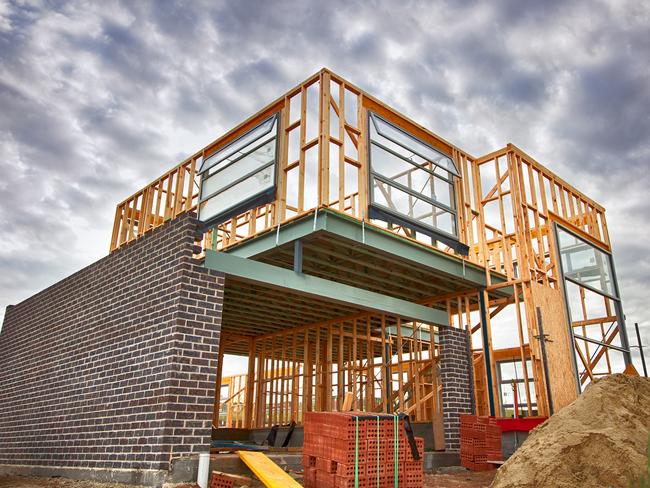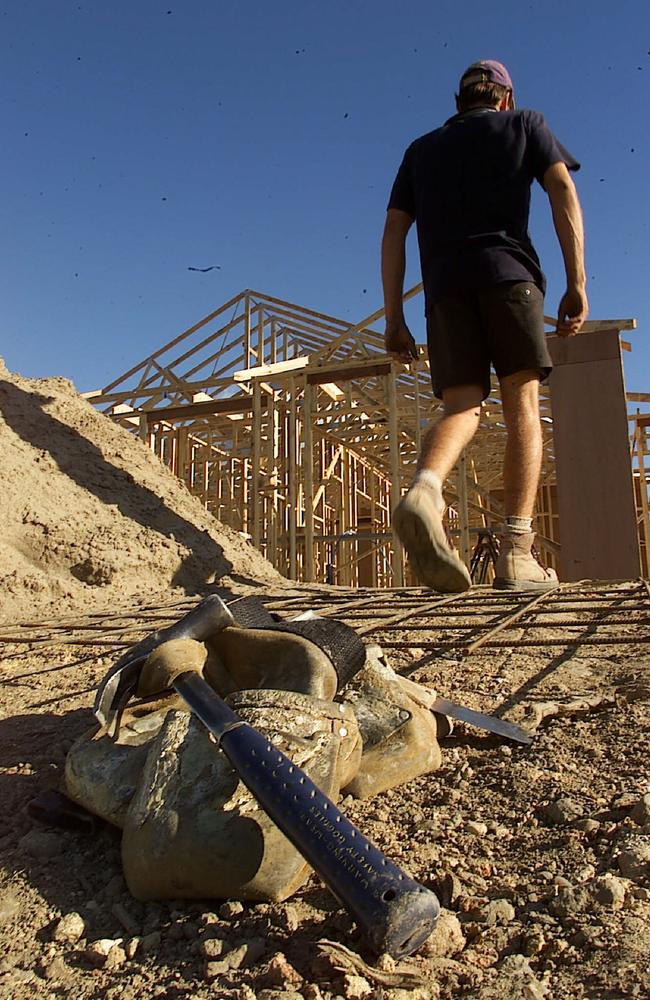A property market slump will have a wide impact, hitting the sharemarket and super balances
WHAT happens when Australia’s housing market slumps? The impact will be felt far and wide, experts warn, hitting the sharemarket and super balances.
Economy
Don't miss out on the headlines from Economy. Followed categories will be added to My News.
A LOOMING fall in the nation’s average house prices is likely to weaken the sharemarket, other investment returns and Australians’ superannuation balances.
A News Corp Australia analysis of property price downturns since the 1970s has found that most went hand-in-hand with lower share prices and savings account returns.
The Reserve Bank of Australia is expected to keep its official interest rate on hold today (Tuesday) but banks have been lifting their rates independently — mainly for investment and interest-only loans.
They are expected to continue this trend after regulators last week tightened the rules amid economists’ warnings of “uncomfortably hot” home prices in Sydney and Melbourne.
RELATED: Understanding real estate cycles is key to buying and selling at the right time
An analysis of official data shows that in the 1970s, 1990s, the Global Financial Crisis of 2008-09, and in 2011-12, when house prices went into negative territory share prices also fell.
“If property prices come down people feel poorer and it affects consumer spending, the sharemarket and the economy,” Said AMP Capital chief economist Shane Oliver.

“I think we are at or close to the top in terms of price growth at the moment.
“The average home in Sydney is 74 per cent higher than it was five years ago, and wages are up only 14 per cent.”
Rising interest rates had been responsible for several property and sharemarket downturns, Dr Oliver said.
National residential property prices rose 7.7 per cent last year with double-digit growth in Sydney and Melbourne, according to the Bureau of Statistics, and new CoreLogic data suggests the pace of growth has accelerated dramatically in 2017.
Sydney dwelling prices surged five per cent in the March quarter, CoreLogic said yesterday, and are now up 18.9 per cent year-on-year. Melbourne’s year-on-year rise is 15.9 per cent.
Brisbane dwelling prices were steady in the March quarter. Adelaide dwelling prices climbed 1.6 per cent in the three months and are up 3.4 per cent year-on-year, CoreLogic said.
In the quarter, Hobart dwelling prices surged 5.6 per cent while Darwin dwelling prices fell 3.1 per cent.
Wealth for Life Financial Planning principal Rex Whitford questioned how long the boom would last because weak wage growth meant people could not afford to pay more rent.
“I am very concerned about where we are heading,” he said. “Some people make self-deluding comments that the property market never goes down in value.”

Mr Whitford said property downturns had historically led sharemarket falls.
“It comes down to the liquid nature of the sharemarket.”
Unlike real estate, investors could quickly withdraw money from the share market in a “flight to safety”.
Many Australians’ super funds have at least 50 per cent of their money in growth assets such as property and shares.
AMP’s Dr Oliver said negatives were lining up for property, including rising interest rates, tougher regulations, worries about next month’s Budget measures and “horrible affordability” in Australia’s two largest cities.
He expected average property prices to drop nationally from next year, and the size of the falls would determine how much pain was felt elsewhere.
“This time it’s complicated because the strength of the property market is in Sydney and Melbourne,” he said. Other cities have had negative or moderate growth.
Dr Oliver said a 5-10 per cent fall might not damage other markets and investments too much, but a larger 20 per cent drop would mean “you wouldn’t get much protection in the sharemarket”.


